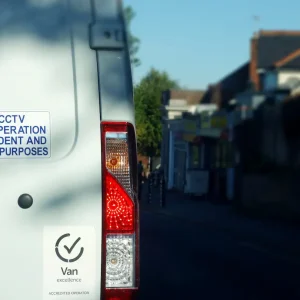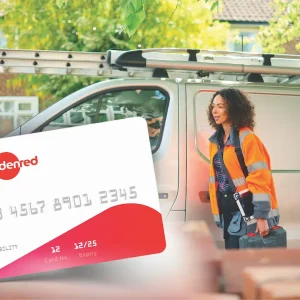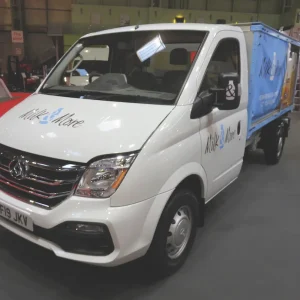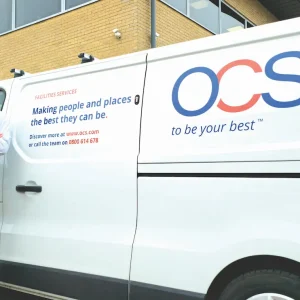The overriding influence on used van values during the past three years has been the squeeze on supply caused by the knock-on affect of the crash in new van sales in 2009.
The overriding influence on used van values during the past three years has been the squeeze on supply caused by the knock-on affect of the crash in new van sales in 2009.
From 2011 the stream of good quality used vans coming to market dwindled to a trickle, forcing the value of good quality stock to rocket on one hand but on the other compelling operators to scrape the barrel for older, poorer-conditioned LCVs or simply to hold on to their existing fleets.
With the economy now apparently in recovery mode, although many small businesses in particular are still struggling to secure funding, and with new van sales on the up, used supply should increase to more closely match demand.
But in its monthly LCV market analysis for September BCA reports average values remained at near record levels as buyers competed strongly for the limited number of retail-ready vans on offer.
The average price paid for a van at a BCA auction in September was £5560 – the third highest on record. Year-on-year values were ahead by 7.7% with average age down by three months to four years eight months and mileage up marginally to 80,600 miles.
BCA’s commercial vehicle boss Duncan Ward comments “There can be little doubt the improving economic background is giving a boost to the used LCV market, and small and medium-sized enterprises (SMEs) remain positive about future prospects. The shortage of good retail quality stock is helping to keep values firm and competition is high for well-presented vans in good colours.”
With Christmas on the horizon Ward adds: “We are now moving into the time of year when the demand for parcel, courier and delivery vans of all types and capacities starts to ramp up, and this will help to keep values firm over the coming weeks.”
Ward says the used market was generally strong over the summer months but stresses the key driving factor for residual values remains supply of good quality stock – or rather the lack of it.
“This means there is plenty of competition for the best examples reaching the market. Buyers particularly like any vehicle with a good useable specification or specialist equipment and there is always demand for Lutons, dropsides and tippers,” he says.
However, Ward cautions vendors to price damaged vans with high mileage and in unpopular colours realistically if they expect to sell them first time.
Assessing prospects for the used van market in 2015 and beyond, Ward could see grounds for optimism on a couple of fronts.
“The construction industry is expecting to ramp up to meet the needs of numerous infrastructure projects, road network improvement schemes and house building projects and this will do much to improve confidence in small businesses serving the civil engineering and construction industries. The building and associated trades are some the biggest buyers of used LCVs, so we should expect demand to remain relatively strong for some time ahead,” he says.
“Additionally, the digital shopping revolution continues to generate the need for parcel, courier and delivery vans of all types and capacities, which is delivering broad based demand into the used van sector and keeping values firm.”
Alex Wright, the boss of Shoreham Vehicle Auctions and chairman of the National Association of Motor Auctions (NAMA) expects the market to remain robust for the remainder of the year with increases in age and mileage doing little to curb enthusiasm with values across the UK’s auctions rising on average by 0.8% between August and September to £4967. Wright notes trade buyers are cautious about holding too much expensive, late-plate stock due to heavy manufacturer discounting on new vans and pick-ups but is upbeat on prospects for next year.
“Provided the UK’s economy continues to avoid the worst of the financial turmoil being experienced across the channel, demand for used LCVs is expected to hold firm into 2015.”
Average prices for used LCVs sold online by Autorola, reached an all-time high in Q3 of £10,986. This peak represents an increase of 4.5% over the previous quarter and compared to the same period in 2013, the internet-based trader says values have soared by 28.9% – an additional £2,462 per vehicle.
Autorola’s UK boss Neil Frost observes: “Earlier this year, we saw prices balloon as lower quality stock flooded the marketplace, pushing the demand for newer, higher quality vehicles. SMEs are growing on the back of a resurgent economy, which continues to push demand and prices as they look to source new or additional vehicles.”
But looking ahead, he says: “Prices are beginning to level out. This is the smallest quarterly increase we have experienced in 2014, and we believe prices will remain stable in Q4 and into Q1 2015.”
John Davies, Vehicle Remarketing Association chairman, predicts RVs in 2015 will continue in this year’s vein.
“We expect prices to remain strong into 2015. While an influx of fresh stock from part-exchanges on the March new plate might cause used prices to soften slightly, there is little to suggest a significant change to this year’s pattern of trading.”
David Hill, LCV valuation manager for vehicle data supplier CDL Vehicle Information Services, names the standout performers in this year’s used marketplace as the VW Transporter, and the LWB versions of the Merc Sprinter and Ford Transit.
He adds that chassis cab variants are always sought after too.
Hill reiterates that stock shortage is still the big driver pushing up RVs.
“New van sales dipped for quite some time after the financial crash. The knock-on effect is a shortage of 3-5 year old used vehicles, which is keeping values high.”
Steve Jones, general manager Asset Risk for Leaseplan UK, says the upward trend in used LCV values this year has defied predictions they would become over-inflated and fall.
Jones acknowledges that LeasePlan’s latest price index shows values have fallen by 5% since May, while in a normal market they might have expected to dip 2%, but he points out values in May were at a record high.
“The limited supply of used LCVs is a big factor in keeping values high, but as the economy recovers, demand is also increasing. The clearest evidence of this is the conversion rate at LeasePlan’s auction sales. In the first two weeks of October, 92% of the vehicles offered in each auction were sold – at the same time last year this was 88%, with underlying volumes at a very similar level.”
Jones continues: “With supply unlikely to change much and demand increasing, the outlook for LCV residual values over the next few years is positive.”
2015 prospects: The residual value providor’s view
George Alexander, Glass’s CV editor, warns that economic problems in other European countries could put the brakes on the UK’s recovery but insists prospects for sales of used commercial vehicles domestically are by no means bleak.
“It has been clearly demonstrated over recent times that, providing dealers keep a cool head and adopt a flexible approach to their customers’ changing needs, they will prosper. Over the past five years, many of those businesses that didn’t follow this path are no longer trading.”
Alexander says dealers should get to know their local areas and supply the stock it needs then they can minimise the impact of temporary market weaknesses.
“If you anticipate what your customers are likely to require and buy the appropriate stock at the right price, selling becomes relatively straightforward,” he claims.
It’s a neat trick if you can pull it off and one that is likely to serve vendors well no matter what the year or economic climate.





